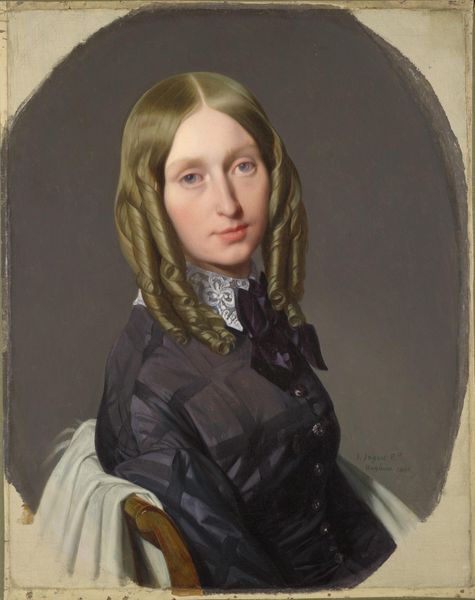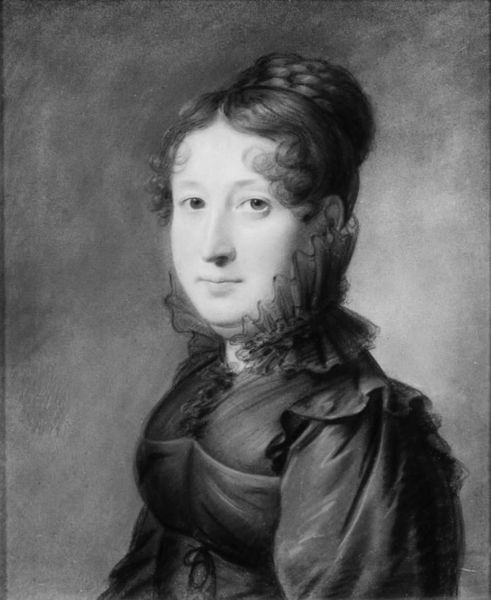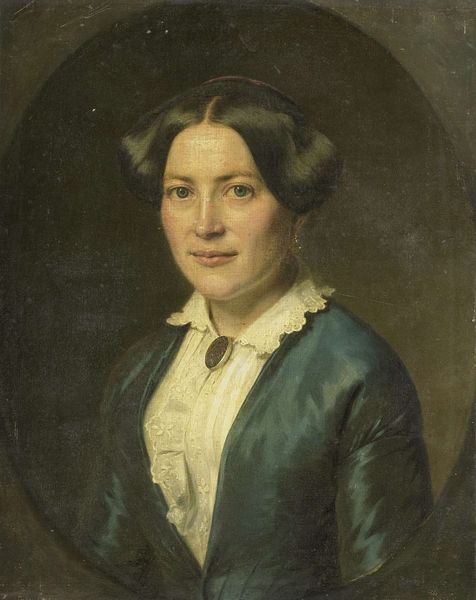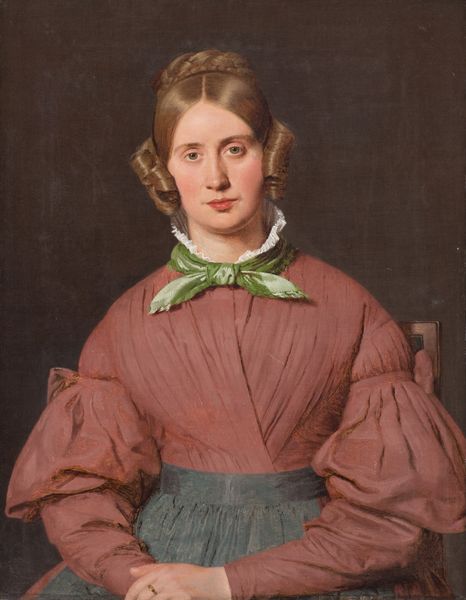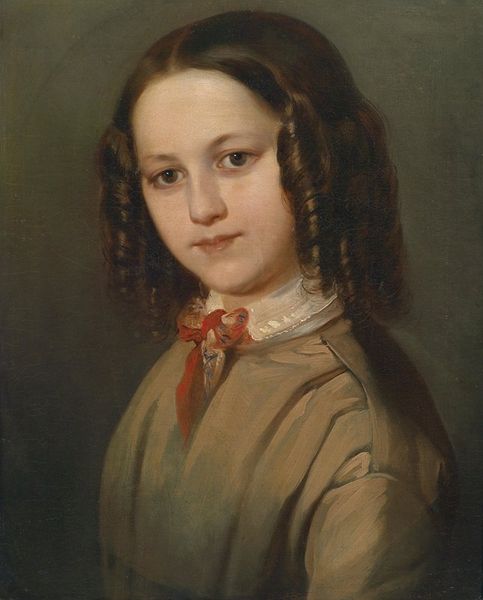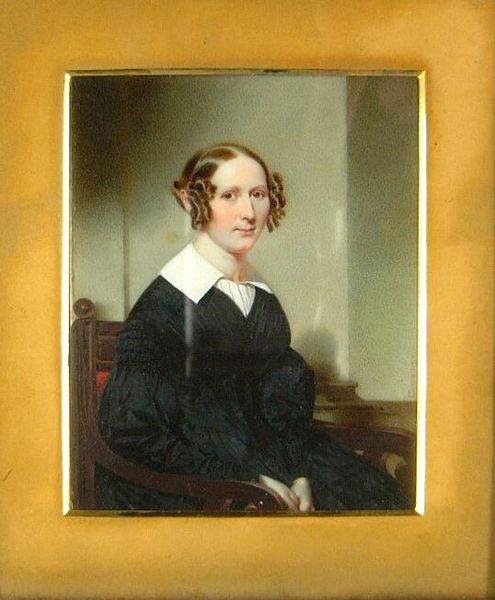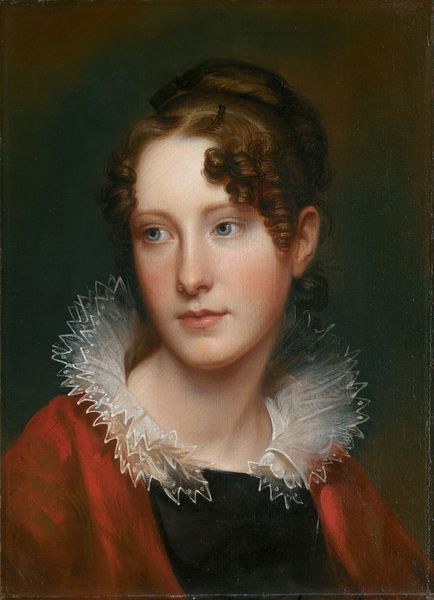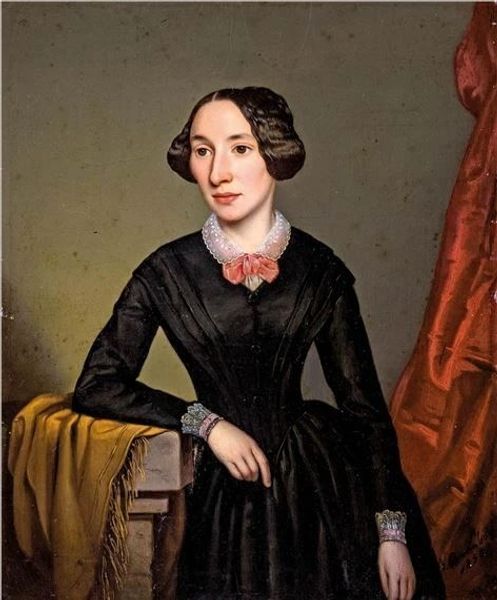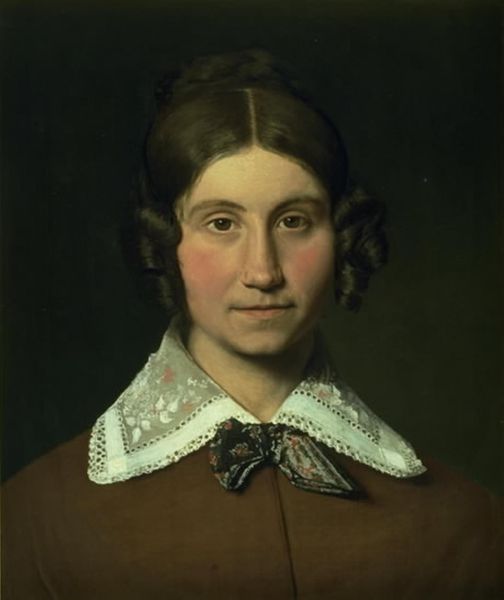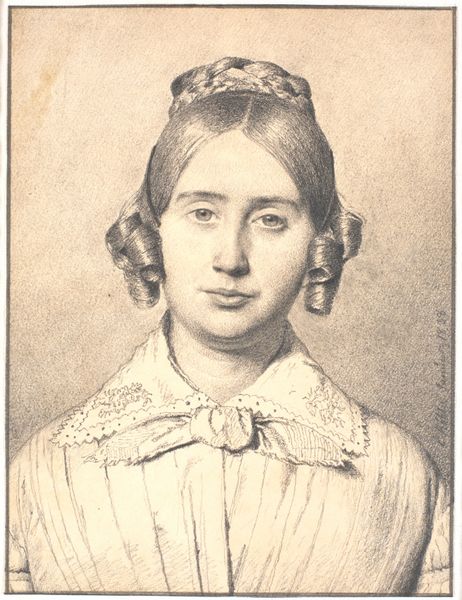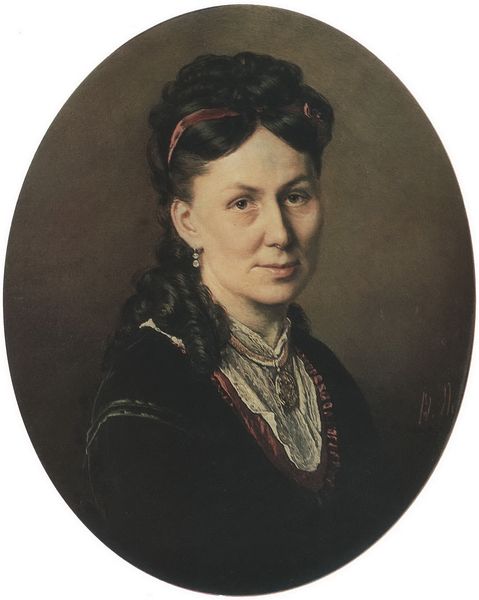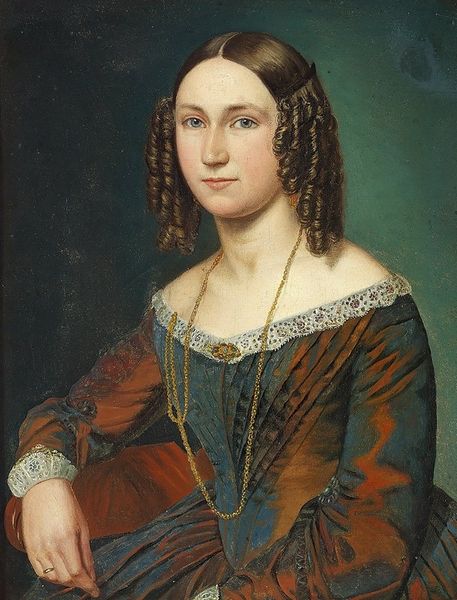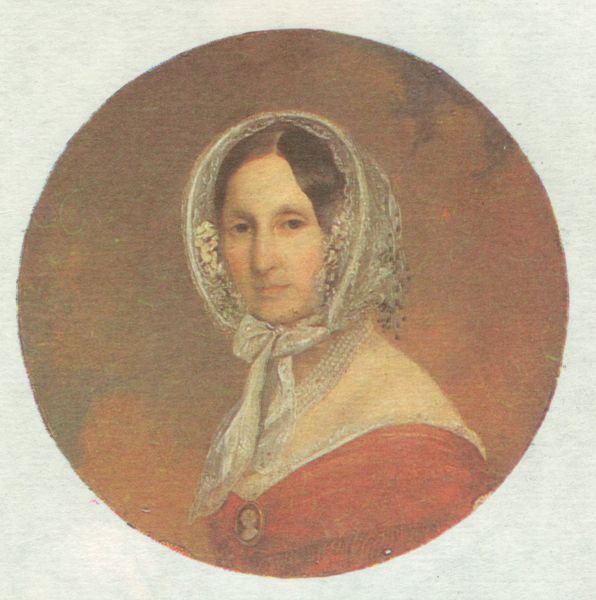
painting, oil-paint
#
portrait
#
neoclacissism
#
narrative-art
#
portrait
#
painting
#
oil-paint
#
academic-art
Copyright: Public domain
Curator: Let’s discuss Jean-Auguste-Dominique Ingres' 1847 portrait of Madame Frederic Reiset, which currently resides at the Fogg Museum. What strikes you initially about this piece? Editor: The overwhelming sense of constraint. Everything is tightly controlled—the dark color palette, the composition in that oval frame, and even the subject's expression feels very contained. The light is perfectly even; there are no playful shadows to relieve this somber rigidity. Curator: Ingres certainly aimed for an ideal of beauty and order deeply rooted in Neoclassical principles, seeking to embody a kind of timeless, almost sculptural perfection. But do you think the context, the societal constraints placed on women of that era, for instance, contribute to the overall sense you’re getting? Editor: Undoubtedly. Look closely at the gown. The glossy materiality practically screams luxury and industrial weaving techniques—probably produced using horrific labor conditions. The lace and precisely arranged curls point towards a deliberate performance of wealth and status. This isn't just about personal beauty, but the capital surrounding Madame Reiset's existence. Curator: The precise rendering of her dress, with those very dark, finely textured fabrics, absolutely speaks to the burgeoning textile industry of the time. Also, let's think about portraiture as a genre in the 19th century. It wasn't just about representation, it was about conveying social standing, propriety, and power dynamics. Her somewhat melancholic expression, while perhaps "constrained" as you mentioned, can also be read as a signifier of her position as a respectable woman, valued for virtue rather than flamboyance. Editor: But it’s the artificiality of the whole scene! Ingres labored over these painted surfaces, crafting every last fold of fabric. We see a deliberate manipulation of materials for ideological ends. The very *making* of the portrait underlines this dance between artist, subject, and social expectations. Curator: Exactly. By bringing that critical lens, focusing on the materials and techniques, we get a much richer understanding of not just *what* the portrait depicts, but *how* it conveys specific cultural meanings. Editor: I agree, interrogating these elements opens a deeper discussion on power, labor, and social construction of identity, especially female identity. It pushes the image beyond just another pretty face in art history. Curator: Indeed, Ingres’s dedication to portraying material wealth with exactitude offers a point of access for conversations regarding gendered dynamics, economic histories, and their relation to representation in fine art.
Comments
No comments
Be the first to comment and join the conversation on the ultimate creative platform.
